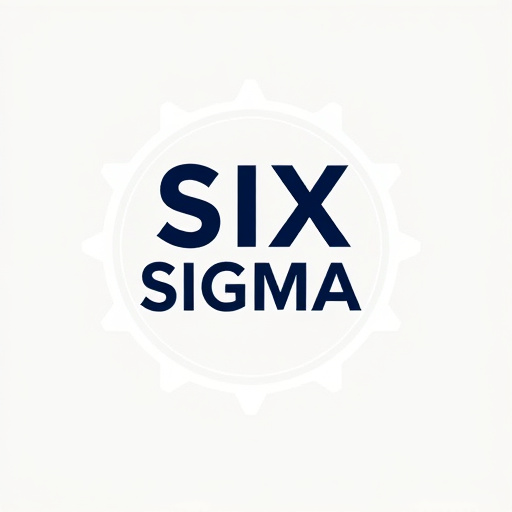Lean manufacturing principles, emphasizing recall prevention, enhance product quality by eliminating waste and streamlining processes, ultimately boosting customer trust and market competitiveness. Six Sigma, a structured, data-driven methodology, utilizes DMAIC (Define, Measure, Analyze, Improve, Control) to reduce defects, improve efficiency, and lower costs. Integrating Lean and Six Sigma practices offers operational excellence, but requires aligning philosophies, comprehensive training, managing change resistance, and fostering continuous improvement cultures for maximal benefits.
In an era where product quality and safety are paramount, recall prevention stands as a cornerstone of manufacturing excellence. This article delves into the critical role of Six Sigma practices in mitigating risks and ensuring product integrity. We explore the synergy between Lean methodologies and Six Sigma, offering a comprehensive guide to implementation. Learn how these powerful tools can enhance your production processes, minimize costly recalls, and drive sustainable success in today’s competitive market.
- Understanding Recall Prevention: The Lean Approach
- Six Sigma Methodology: A Deep Dive
- Implementing Six Sigma for Product Quality and Safety
- Benefits and Challenges of Integrating Lean with Six Sigma Practices
Understanding Recall Prevention: The Lean Approach

Recall prevention, a cornerstone of Six Sigma practices, aligns perfectly with the principles of Lean manufacturing. At its core, recall prevention is about minimizing defects and ensuring product quality at the source. The Lean approach to recall prevention involves eliminating waste, streamlining processes, and fostering a culture of continuous improvement. By adopting Lean methodologies, organizations can identify and address potential issues early in the production cycle, reducing the likelihood of costly recalls later.
This proactive strategy not only saves resources but also builds customer trust. In today’s competitive market, where product quality and safety are paramount, lean recall prevention practices provide a significant advantage. It enables businesses to deliver defect-free products consistently, enhancing their reputation and fostering long-term relationships with consumers.
Six Sigma Methodology: A Deep Dive

Six Sigma is a data-driven methodology that focuses on process improvement and defect reduction. It involves a structured approach to identify and eliminate root causes of defects, resulting in higher quality products and services. The core of Six Sigma lies in its five-step process: Define, Measure, Analyze, Improve, and Control (DMAIC). This lean methodology encourages organizations to adopt a mindset of continuous improvement by emphasizing statistical analysis and process optimization.
By applying Six Sigma practices, businesses can enhance efficiency, reduce costs, and ensure consistent quality. It involves engaging cross-functional teams to identify key performance indicators, collect and analyze data, implement changes, and monitor results. This collaborative effort fosters a culture of problem-solving and enables organizations to deliver exceptional customer experiences.
Implementing Six Sigma for Product Quality and Safety

Implementing Six Sigma leverages the principles of lean manufacturing, focusing on eliminating waste and reducing variability in production processes. By fostering a culture of continuous improvement, organizations can enhance product quality and ensure safety standards are met. Through rigorous data analysis and targeted project management, Six Sigma methodologies identify and rectify defects at their root causes, leading to more consistent and reliable outcomes. This proactive approach not only improves customer satisfaction but also fosters a safer working environment by minimizing errors and accidents related to product defects.
Benefits and Challenges of Integrating Lean with Six Sigma Practices

Integrating Lean and Six Sigma practices offers significant benefits for organizations striving for operational excellence. Lean, known for its focus on eliminating waste and streamlining processes, complements Six Sigma’s data-driven approach to defect reduction. By combining these methodologies, companies can achieve remarkable improvements in efficiency, quality, and customer satisfaction. For instance, Lean’s value stream mapping techniques help identify non-value-added steps, while Six Sigma’s statistical tools enable rigorous process optimization, resulting in cost savings and enhanced productivity.
However, merging these practices also presents challenges. Aligning diverse philosophies and ensuring effective collaboration requires dedicated effort. Organizations need to invest in comprehensive training to help employees understand the unique strengths of each method and learn how to integrate them seamlessly. Additionally, managing resistance to change and fostering a culture that embraces continuous improvement are vital for successful implementation. Overcoming these challenges is crucial for unlocking the full potential of Lean-Six Sigma integration, leading to a more robust and adaptable organizational structure.
Recall prevention is a critical aspect of maintaining consumer trust and brand reputation, especially in today’s competitive market. By combining Lean and Six Sigma methodologies, organizations can effectively streamline processes, identify root causes, and minimize defects, ultimately enhancing product quality and safety. Integrating these practices proves to be a powerful strategy for reducing recalls, fostering efficiency, and ensuring long-term success, making it an indispensable tool for any manufacturing business aiming for excellence.
